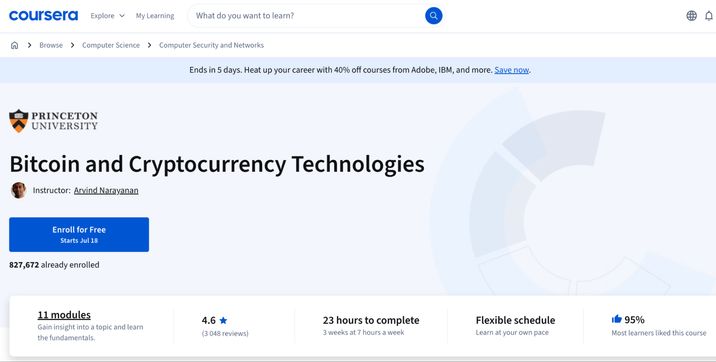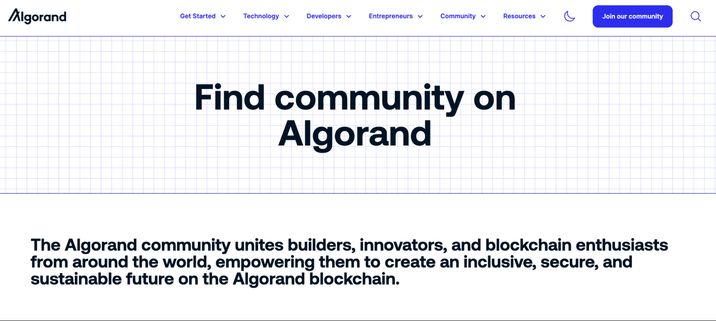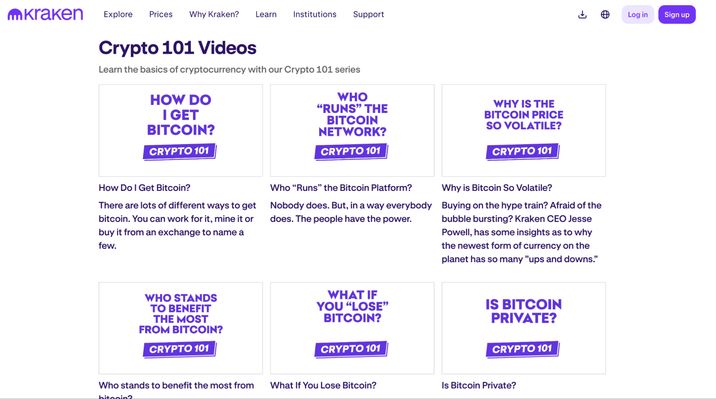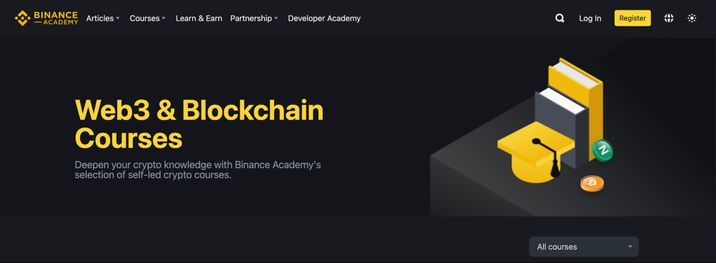Best Online Cryptocurrency Courses in 2025

Understanding cryptocurrency is valuable for making a profit and trading without emotional bias. We’ve compiled the most popular and useful crypto courses for both beginners and advanced users.
Cryptocurrency Courses by UDEMY
Udemy offers over 700 cryptocurrency courses, with an average rating of 4.4 and nearly 3.5 million students enrolled.
One of the largest and most popular is The Complete Cryptocurrency Course: More than 5 Courses in 1 by Chris Haroun. It includes 23 hours of content, 217 lectures, a 4.6-star rating, and over 18,800 reviews. This course covers everything from investing and mining to working with wallets, exchanges, DeFi, and NFTs. It’s designed for both beginners and experienced users and features hands-on assignments as well as Excel spreadsheets for portfolio analysis.
Another very popular option is Cryptocurrency Investment Course 2025: Fund your Retirement by Suppoman, updated November 2024. It holds a 4.5-star rating (based on 24,890 reviews) and has attracted over 120,000 students. The course combines six modules covering core fundamentals, Bitcoin and Ethereum, early investing strategies, meme coins, Layer 1 blockchains, DeFi, the metaverse, and NFTs. Suppoman shares his personal strategy, showing how he achieved significant portfolio growth, and demonstrates how to set up wallets and interact with both centralized and decentralized platforms.
For those who want to get started with minimal time and learn the basics quickly, there's George Levy's Cryptocurrency Fundamentals: Buy, Sell, Trade Cryptocurrency course — only about 2 hours of material with a 4.5 rating and 11,635 students. It explains the basics of trading, storage, and staking, and the video comes with a PDF guide to help you understand the topics more efficiently.
Coursera: Cryptocurrency Courses

Coursera is a global platform with an extensive database of cryptocurrency and blockchain technology courses from the world's leading universities and companies. Among the most popular:
- Bitcoin and Cryptocurrency Technologies from Princeton, with a rating of 4.6 based on over 3,000 reviews, is labeled as “very good” for understanding the technical basics of Bitcoin.
- Cryptocurrency and Blockchain: An Introduction to Digital Currencies from the University of Pennsylvania (rating 4.6)
- Blockchain and Cryptocurrency Explained from the University of Michigan (rating 4.7)
What makes Coursera special is its academic structure: clearly organized modules, test assignments, and the opportunity to earn an official certificate. There is free access to the first modules or a 7-day trial, but the full course will require payment.
However, the course from Princeton provides solid technical knowledge, a bit challenging for beginners, but worth the effort. The only criticism is the outdated materials: the course hasn't been updated in a while, and smart contracts and Ethereum are not covered in detail.
Overall, Coursera is ideal for those seeking a fundamental, academic understanding of cryptocurrency, blockchain principles, and market dynamics, backed by an educational certificate.
Algorand Development 101

The Algorand community offers everything you need to explore the blockchain ecosystem, from the basics to building decentralized applications (dApps). The official developer website offers a learning-focused portal, including documentation, bootcamps, master classes, and live workshops.
AlgoKit is a toolkit that helps developers quickly get started building and testing smart contracts in popular languages like Python, JavaScript, and Go. The platform regularly hosts free bootcamps — short, intensive courses with hands-on practice — followed by an online hackathon. Upon completion, participants receive NFT certificates that can be showcased on LinkedIn.
There’s also an active community on Discord and various forums where you can share experiences and discuss ideas. In addition to the official programs, the Dacade platform offers community-driven training — a course called Algorand Development 101 with four modules lasting about 120 minutes. It includes building a marketplace dApp on Algorand: writing smart contracts in PyTeal, creating a React frontend, and connecting to the test network.
Kraken Learn: Crypto 101

Kraken Learn is the educational arm of the Kraken crypto exchange, and its Crypto 101 video series holds a prominent place. These materials are aimed at absolute beginners who are just starting to explore cryptocurrencies and blockchain technology. Kraken focuses not on quantity but on quality of presentation: you won’t find an overload of short articles or shallow reviews. Instead, users are offered well-structured video tutorials that explain fundamental concepts — what Bitcoin is, why it matters, why its price fluctuates, and what to do if you lose access to your funds.
There’s a dedicated section on security. In the Crypto Security Guide series, Kraken’s CISO (Chief Information Security Officer) explains how two-factor authentication works, why hardware keys like YubiKey are important, how to protect yourself from SIM swap attacks, and why hot wallets aren’t ideal for storing large amounts of crypto. This section is especially helpful for beginners who may struggle to grasp the practical side of asset protection.
Kraken Learn benefits from its neutrality: there are no frequent plugs for Kraken’s products or calls to open an account. This creates a sense of a more academic and independent approach. However, there are some limitations. First, the entire platform is only available in English, which can be inconvenient for non-English speakers. Second, the course stays at the beginner level — there’s no material on more advanced topics like DeFi, NFTs, Layer 2, or algorithmic trading strategies. Additionally, users don’t receive any rewards like tokens or bonuses for completing the course.
Binance Academy

Binance Academy is an educational initiative by the world’s largest cryptocurrency exchange. It offers free educational resources on cryptocurrencies, blockchain, DeFi, Web3, NFTs, security, and technical analysis.
The platform targets a wide range of users — from beginners to advanced users and even developers. New users begin with introductory materials: what blockchain is, how cryptocurrencies work, why wallets are needed, and the differences between hot and cold wallets.
These topics are presented through short articles and videos with infographics, available in multiple languages, including Spanish and several Asian languages. This makes Binance Academy especially accessible for newcomers who don’t speak English.
The Beginner and Intermediate Tracks cover the fundamentals of crypto and blockchain.
The training isn’t purely theoretical: some courses are part of a “Learn & Earn” program, where users can take a short quiz and earn small amounts of crypto as a reward. This helps boost motivation and gives users an immediate sense of involvement in the ecosystem. Beyond basic courses, the platform includes content for intermediate and advanced levels — users can explore DeFi protocols, trading algorithms, order types, Layer 2 solutions, and the infrastructure behind NFTs. Binance also regularly offers technical and partner-driven programs, such as courses on building dApps on the BNB Chain.
However, Binance Academy content is often tied to the exchange’s own ecosystem, with many examples referencing Binance Wallet, Binance Launchpad, or Binance Earn. This can make the experience feel promotional at times, which might not appeal to those looking for a neutral learning platform. Additionally, despite the wide range of content, the platform lacks a consistent learning structure — it feels more like an encyclopedia than a cohesive educational program. To gain deeper knowledge or make steady progress, users will likely need to create their own learning paths.
How to Choose an Appropriate Course
Step 1. Define your goal
The course should solve a specific problem. Think about what you want: to learn how to invest in crypto and not lose money? Then practical courses on portfolio management and fundamental analysis are a good fit.
If you want to trade and analyze charts, look for courses that focus on technical analysis (for example, on Udemy or Binance).
Curious about how the technology works? Look for more academic or theory-heavy programs, like those on Coursera. If your goal is to build blockchain applications and start a career in Web3, focus on development-focused courses: smart contracts, NFTs, backend solutions, etc.
Step 2. Choose the right format
Some people absorb information better visually — video courses on platforms like Udemy, Coursera, or Kraken are a good option. If you prefer learning by doing, check out interactive platforms such as Binance Academy (which includes quizzes and rewards) or Dacade (with a code-by-doing approach).
And if you're used to working with documentation and prefer figuring things out on your own, look for developer hubs like Algorand.org or Ethereum.org.
Step 3. Compare courses by key criterias
Once you’ve found a few promising options, compare them based on:
- Updates: the more recent the course, the better — the crypto market evolves quickly
- Reviews: aim for courses rated 4.5 or higher
- Content depth: does the course cover a broad range of topics? Are there practical assignments?
- Certificate: if you need one, go for platforms like Coursera or Udemy
Step 4. Test before you buy
If possible, start with a free module, demo lesson, or short course. Video previews are often available on Udemy, Coursera offers a trial period, and platforms like Binance Academy and Kraken are generally free. This helps you see if the teaching style works for you.